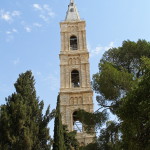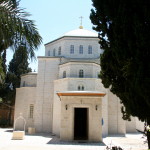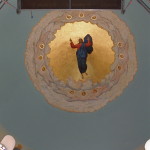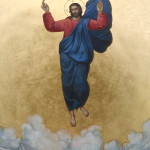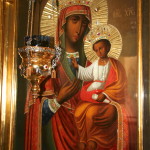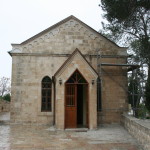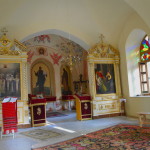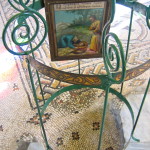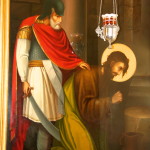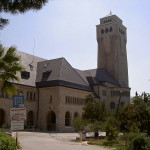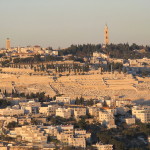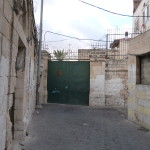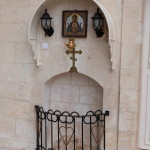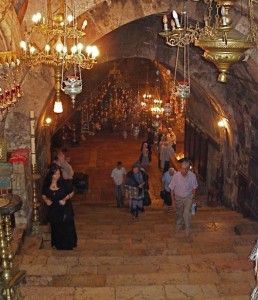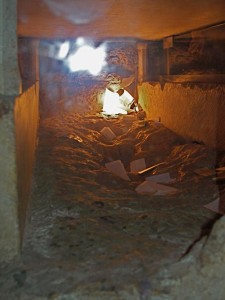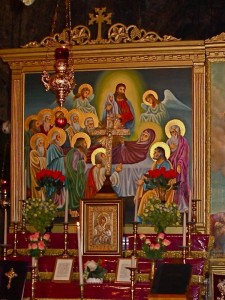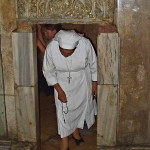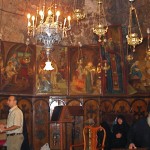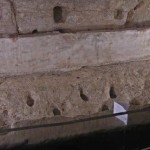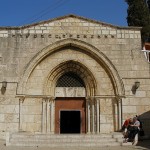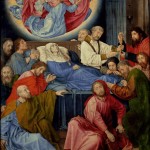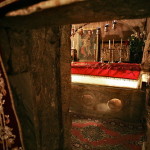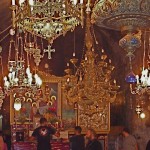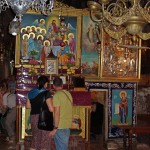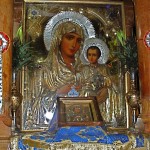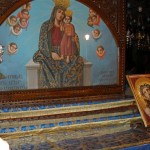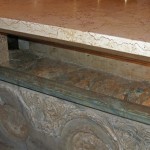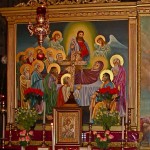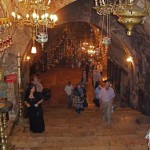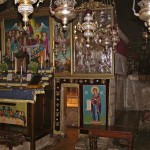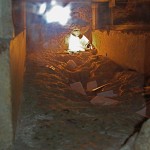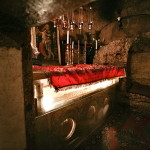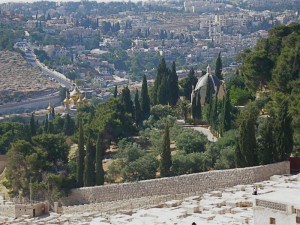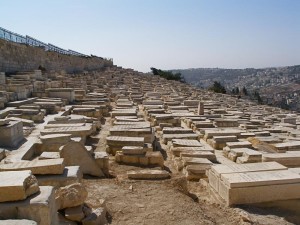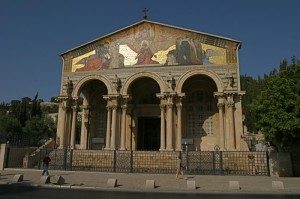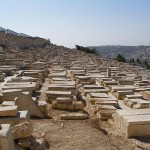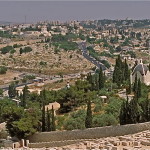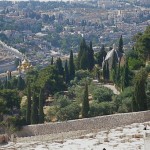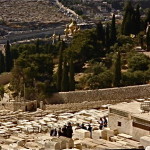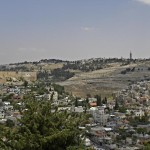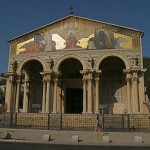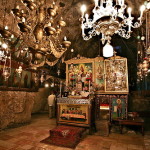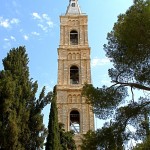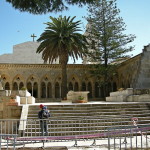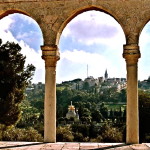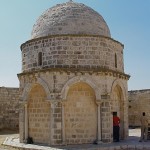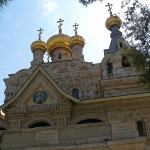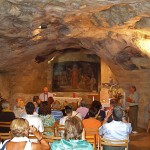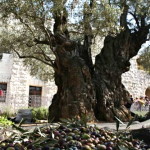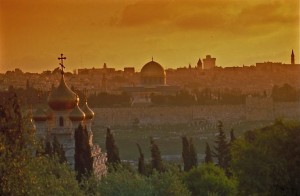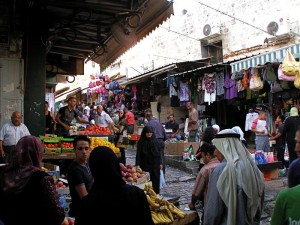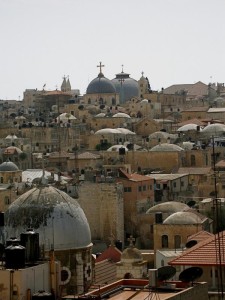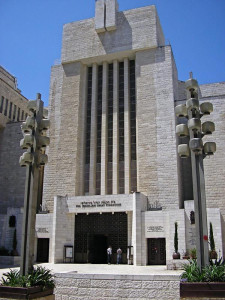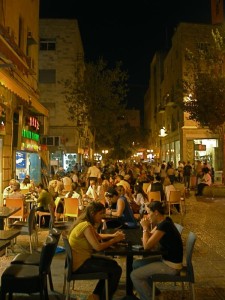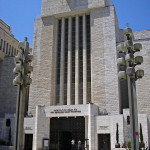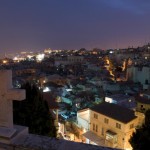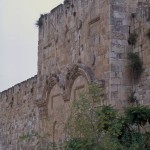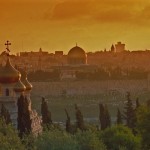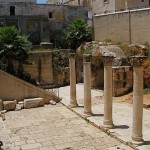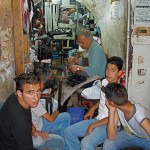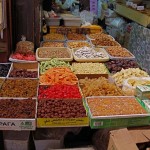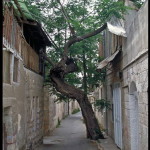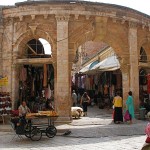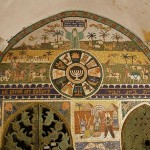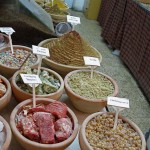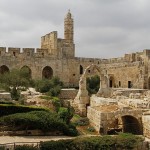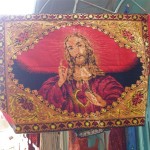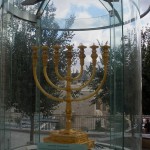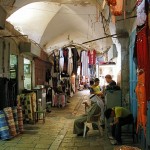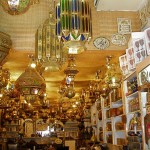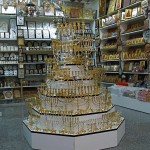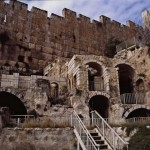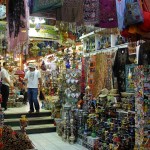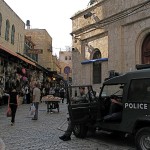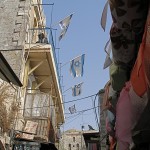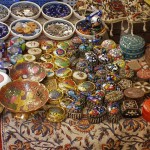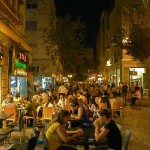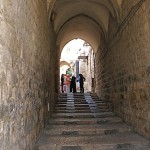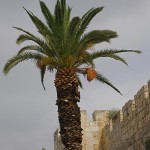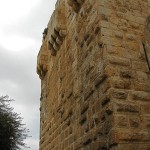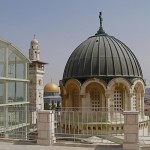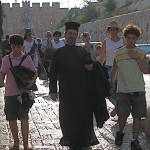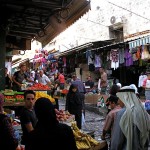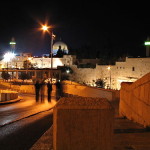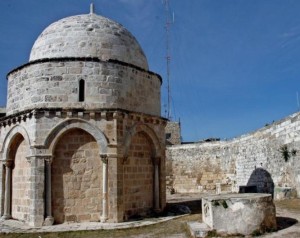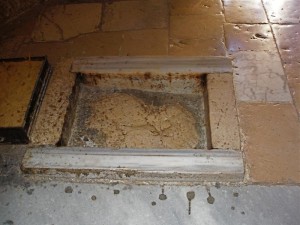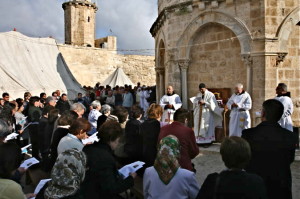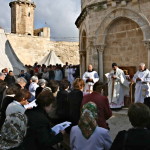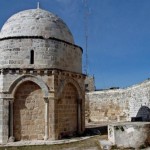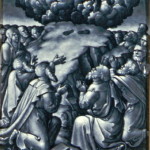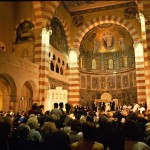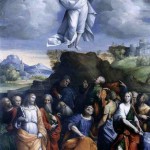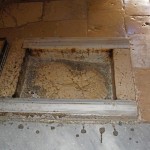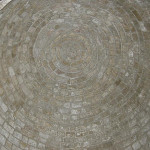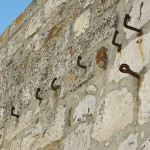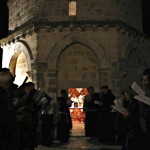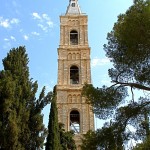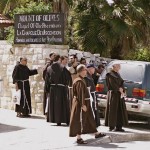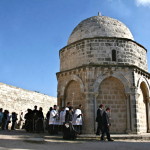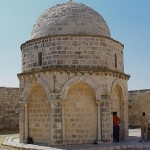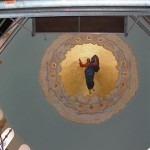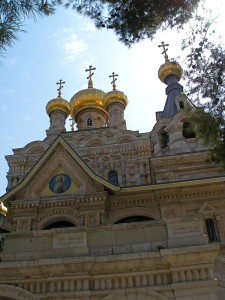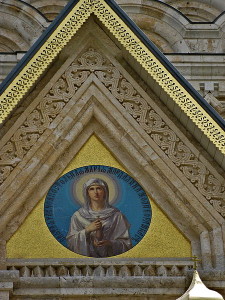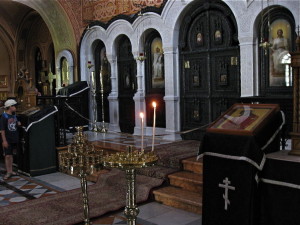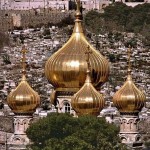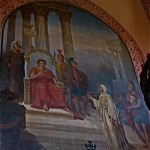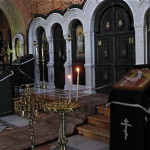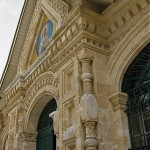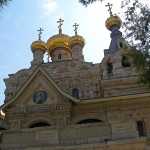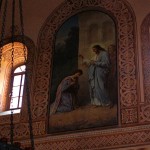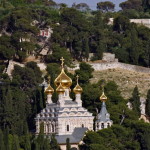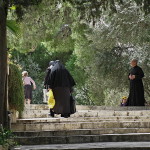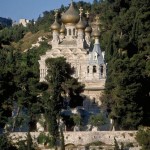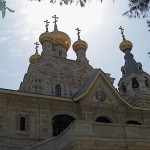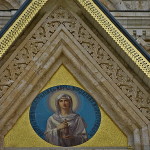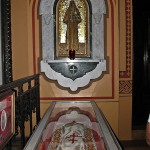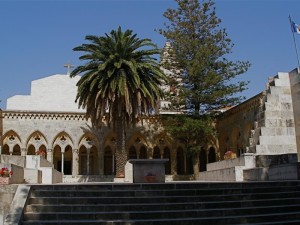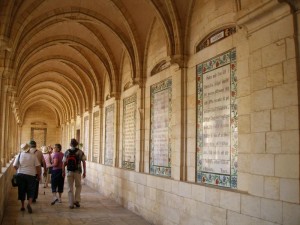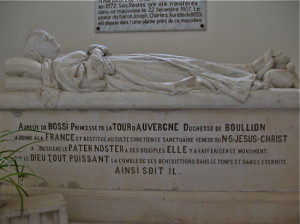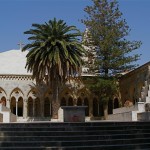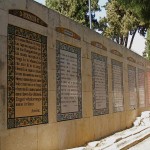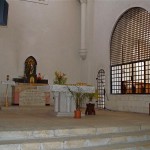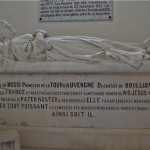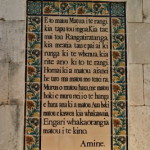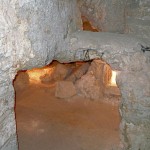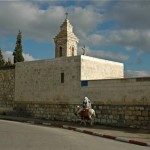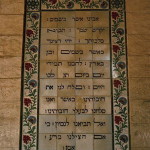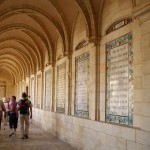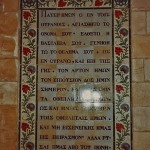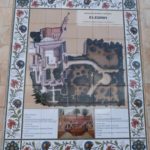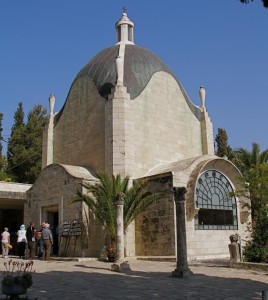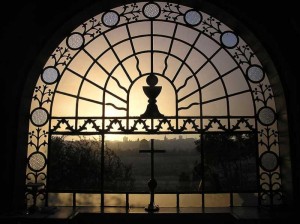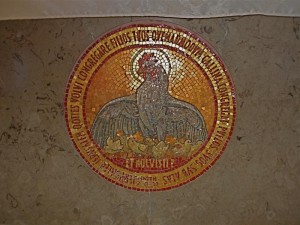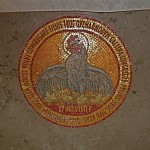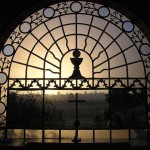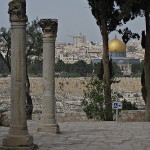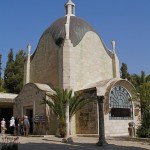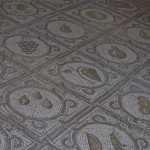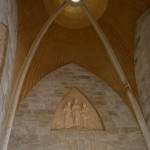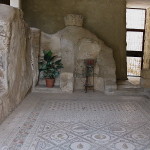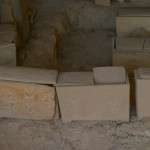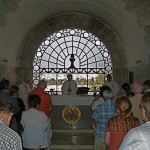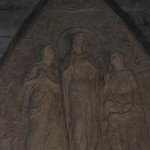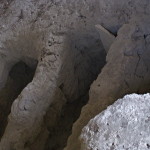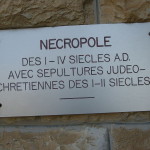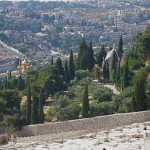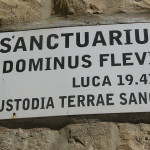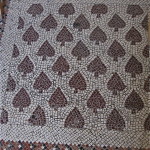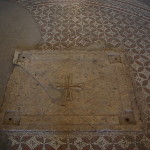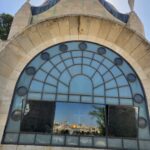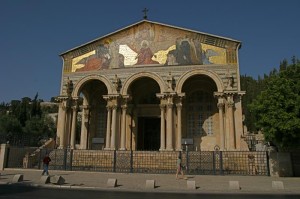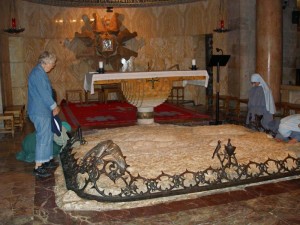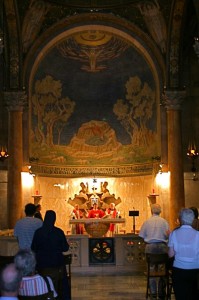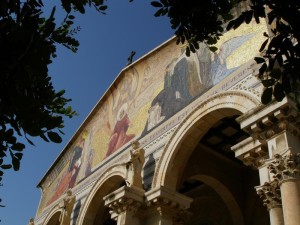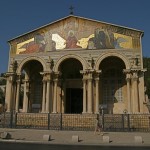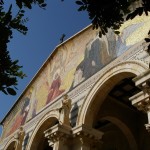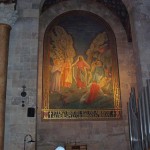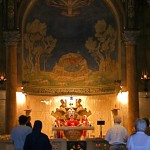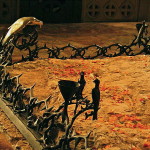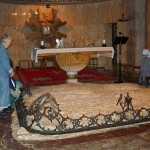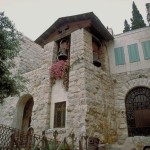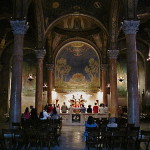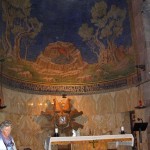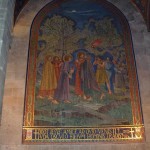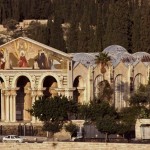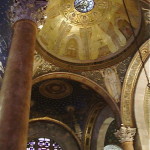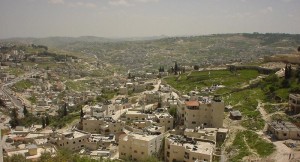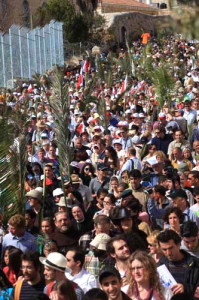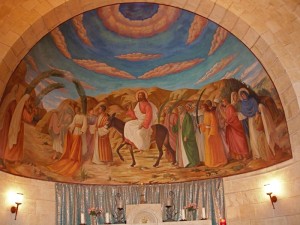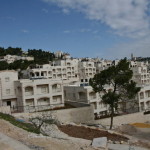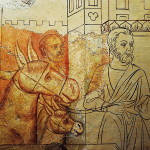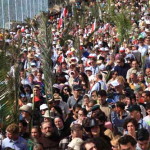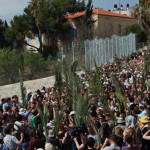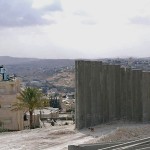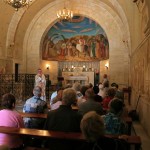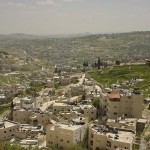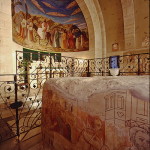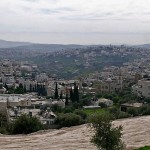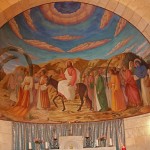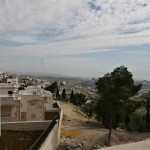Jerusalem
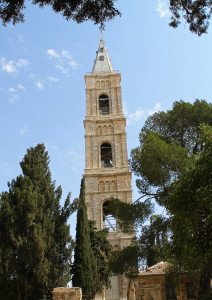
Tower of the Russian Church of the Ascension (Seetheholyland.net)
The 64-metre tower that dominates the Mount of Olives skyline belongs to the Russian Orthodox Church of the Ascension. It was built to this height in the 1870s so that pilgrims unable to walk to the Jordan River could climb its 214 steps and at least see the river.
Atop the freestanding square tower is a sharply-pointed belfry. It contains an eight-ton bell, cast in Russia and pulled and pushed — mainly by women pilgrims — on a circular wagon from the port of Jaffa. It was the first Christian bell to ring in the Ottoman city of Jerusalem.
While the church is dedicated to the Ascension of Jesus — an event most Christians believe took place about 200 metres further west at the Dome of the Ascension — it also claims a connection to St John the Baptist.
An old tradition says the Baptist’s head was buried on the Mount of Olives and discovered on the site of the church by two Syrian monks in the 4th century.
Since 1907 the church has been in the custody of a community of Russian Orthodox nuns from a variety of nations. They are renowned for their singing and their icon-writing.
Chapel marks finding of John’s head
The Russian complex of the church and associated buildings, including a pilgrims’ hostel, is set among gardens with a large olive grove.
Access is from Rabi’a al-Adawwiyya Street (which begins directly opposite the entrance to the Church of Pater Noster) and along a lane on the right called Alley 7. To the left of a big green gate at the end of the lane is a door with a keypad to request entry.
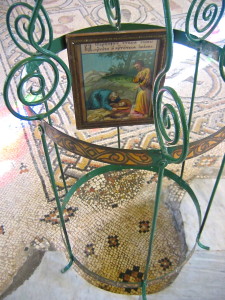
Hollow in floor where John the Baptist’s head is believed to have been found (Matanya – Wikimedia)
The cross-shaped church is surmounted by a dome containing a striking representation of the Ascension. Stains on flagstones from an earlier Byzantine church are believed to be the blood of nuns slain during the Persian invasion of 614.
Attached to an outside wall, protected by a grate, is a rock on which the Orthodox believe Mary, the mother of Jesus, was standing when her son ascended to heaven.
Behind the church is a chapel built on the site where the head of John the Baptist is said to have been found.
The tradition holds that a follower of Christ called Joanna saw Herodias, the wife of Herod Antipas, throw John’s head on a rubbish heap. Joanna recovered it and buried it in a clay pot on the Mount of Olives.
In the 4th century John is said to have appeared in a dream to two Syrian monks who had come to Jerusalem as pilgrims, showing them where his head was buried.
Helena, the mother of the emperor Constantine, was in Jerusalem at the time and ordered a chapel to be built on the spot. The present chapel has a Byzantine mosaic floor with a hollow said to mark the place where the head was discovered.
Three other Ascension sites
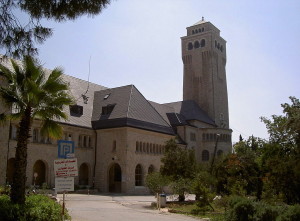
Lutheran Church of the Ascension (Isaac Shweky / Wikimedia)
The Ascension of Jesus is commemorated at three other sites on the Mount of Olives:
* The Dome of the Ascension, a small octagonal structure in a walled compound about 200 metres west of the Russian church. A church has stood here since around AD 380, but the present building is now part of a mosque.
* The Lutheran Church of the Ascension, further north towards Mount Scopus. Also known as Augusta Victoria (after the wife of the Emperor Wilhelm II of Germany who initiated plans for the church in 1989), its fortress-like compound with a tall bell tower now hosts a hospital for the Palestinian population of Jerusalem.
* The Greek Orthodox Viri Galilaei Church, between the Russian and Lutheran churches. Its name means “men of Galilee”, a reference to the question posed to the apostles by two men in white after the Ascension: “Men of Galilee, why do you stand looking up to heaven…?”
Related sites:
In Scripture:
Jesus ascends to heaven: Acts 1:9-11
Administered by: Russian Ecclesiastical Mission in Jerusalem
Tel: 02-628-4373 or 628-0111
Open: Apr-Sep, Tues and Thur, 10am-1pm; Oct-Mar, Tues and Thur, 9am-12 noon. Women must wear skirts.
- Tower of the Russian Church of the Ascension (Seetheholyland.net)
- Russian Orthodox Church of the Ascension (© Chad Emmett)
- Dome of the Church of the Ascension (Seetheholyland.net)
- Close-up of the Ascension of Jesus, in the dome of the Church of the Ascension (© Chad Emmett)
- Stains on flagstones in front of the iconostasis are believed to be the blood of nuns slain in 614 (© Chad Emmett)
- Icon of the Virgin Mary in Church of the Ascension (© Chad Emmett)
- Chapel of the Head of St John the Baptist (© Chad Emmett)
- Interior of Chapel of St John the Baptist (Ben Adam)
- Hollow in floor where John the Baptist’s head is believed to have been found (Matanya – Wikimedia)
- Beheading of the Baptist, in the Chapel of the Head of St John the Baptist (© Chad Emmett)
- Lutheran Church of the Ascension (Isaac Shweky / Wikimedia)
- Russian Church of the Ascension dominating the Mount of Olives, with Lutheran Church of the Ascension at left (Yair Haklai – Wikimedia)
- Green door on Alley 7 leading to Russian Church of the Ascension (Seetheholyland.net)
- Rock on which the Orthodox believe Mary was standing when Jesus went up to heaven (Seetheholyland.net)
References
Bar-Am, Aviva: Beyond the Walls: Churches of Jerusalem (Ahva Press, 1998)
Gonen, Rivka: Biblical Holy Places: An illustrated guide (Collier Macmillan, 1987)
Hilliard, Alison, and Bailey, Betty Jane: Living Stones Pilgrimage: With the Christians of the Holy Land (Cassell, 1999)
Murphy-O’Connor, Jerome: The Holy Land: An Oxford Archaeological Guide from Earliest Times to 1700 (Oxford University Press, 2005)
Rossing, Daniel: Between Heaven and Earth: Churches and Monasteries of the Holy Land (Penn Publishing, 2012)

